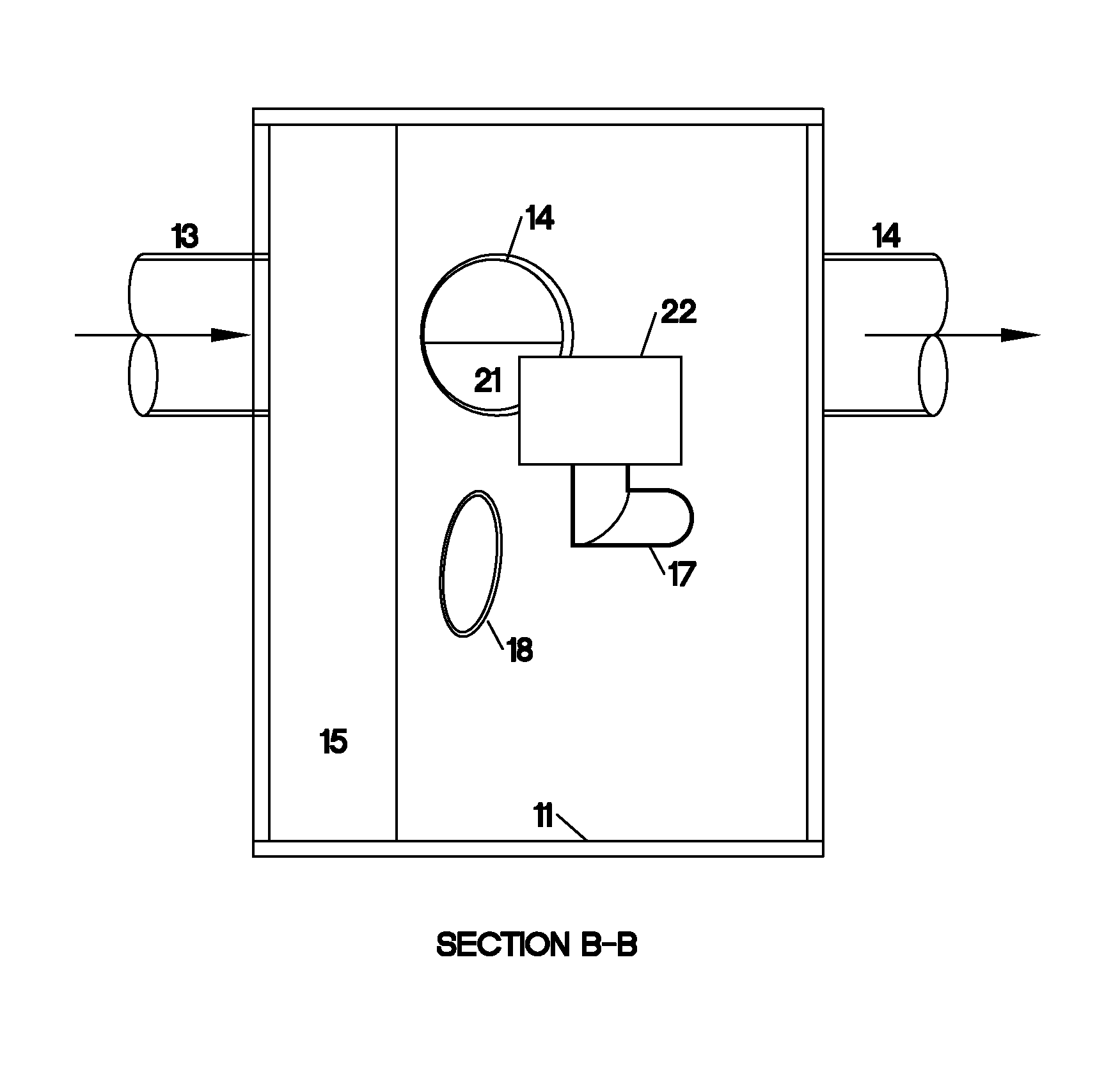Apparatus to separate light fluids, heavy fluids, and/or sediment from a fluid stream
a technology of heavy fluids and apparatuses, which is applied in separation processes, sewage draining, and the nature of treatment water, etc., can solve the problems of accumulating rain water, accumulating pollutants, and treating storm water to create additional difficulties
- Summary
- Abstract
- Description
- Claims
- Application Information
AI Technical Summary
Benefits of technology
Problems solved by technology
Method used
Image
Examples
Embodiment Construction
[0021]A first exemplary embodiment of the invention is illustrated in FIGS. 1-5. The flow separator is located within a cylindrical structure 10, which can be an independent structure or an existing standard cylindrical ground water structure. The structure 10 includes a floor 11 and an interior wall 12, which can be curved, as illustrated, or straight. The wall 12 divides the cylindrical structure 10 into two chambers, a primary chamber 15 and a storage / detainment chamber 16.
[0022]At least one inlet 13 and one outlet 14 are provided for intake and discharge of runoff water. The structure can have multiple inlets which can be located in the side or the top of the structure, however all inlets must initially discharge into chamber 15 of the structure. The structure may also have multiple outlets if placed downstream of the separation structure.
[0023]A first conduit, surface flow conduit 17 connects primary chamber 15 with storage chamber 16. Surface flow pipe 17 draws fluid from the ...
PUM
| Property | Measurement | Unit |
|---|---|---|
| elevation | aaaaa | aaaaa |
| elevations | aaaaa | aaaaa |
| size | aaaaa | aaaaa |
Abstract
Description
Claims
Application Information
 Login to View More
Login to View More - R&D
- Intellectual Property
- Life Sciences
- Materials
- Tech Scout
- Unparalleled Data Quality
- Higher Quality Content
- 60% Fewer Hallucinations
Browse by: Latest US Patents, China's latest patents, Technical Efficacy Thesaurus, Application Domain, Technology Topic, Popular Technical Reports.
© 2025 PatSnap. All rights reserved.Legal|Privacy policy|Modern Slavery Act Transparency Statement|Sitemap|About US| Contact US: help@patsnap.com



